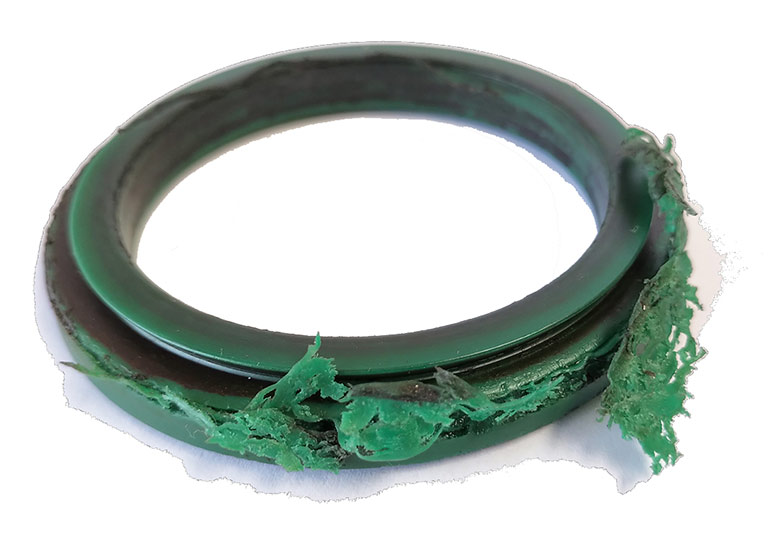By Josh Cosford, Contributing Editor
It would be easy to assume all cylinders fail in the same fashion — that hydraulic cylinders bypass and air cylinders experience bent rods. However, it’s a false assumption because the nature of their operation and intended application differ. Sure, a hydraulic cylinder can bypass but not as easily as a pneumatic cylinder. And indeed, an air cylinder may experience a bent rod, but rarely from its own force creation like with hydraulics.

The medium of compressed gas offers its own challenge to the linear actuator, which in turn results in unique modes of failure. A pneumatic cylinder, by and large, fails most frequently when its seals leak. Air cylinders leak past the rod seal, the piston seal(s) or the end seals. End-of-stroke cushions may also use soft seals, but because they are rarely adjusted after initial commissioning, they tend to be stable for many years.
With seal failure as the primary mode in mind, we must ask why pneumatic cylinder seals fail. When a seal no longer contains or isolates pressurized air, one of many factors plays a part in the breach. Factors in seal failure include heat, extrusion, cracking, physical damage, and regular wear. Some factors, such as wear, are inevitable, while others are preventable through care or forethought.
When rubber heats up, the polymer becomes softer and more prone to wear and extrusion. The softer rubbers exhibit higher friction, so imagine a buna seal heated past its maximum rating and sliding across a steel rod. The higher friction from the soft rubber not only experiences wear across the friction surface as rubber molecules are ripped away, but the likelihood of extrusion increases as the rubber behaves more like a viscous liquid.
Seal extrusion occurs when the clearance or gap between the mating components opens too far, consequently allowing pressurized, semi-liquid rubber to escape. Suppose the extrusion gap (sometimes referred to as “E-Gap”) is large enough. In that case, the seal may catastrophically fail, but more likely, the effect slowly nipples away at the edges, creating a ribbon of rubber material trailing into the low-pressure side. With enough extrusion-related ribbon removing material from the primary sealing location, the cylinder will slowly leak. A specific example occurs with barrel end-seals when the rod is pulled with excessive force, stretching either the tie-rods or screws, which open an E-gap.
When a seal cracks, circumferentially radial (around the O-ring cross-section) gaps tend to open, thereby passing air. Seal cracking occurs through one of various outside influences, such as chemical, heat, or UV exposure. When exposed to oxidizers such as fluorine or chlorine, rubber may quickly harden and crack as it no longer remains soft. Repeated heat cycles accelerate oxidization, even outside the presence of chemical contamination. Ultra-violet exposure may also result in cracking, especially in outdoor conditions subjected to heat and cold cycles.
Physical damage occurs more commonly than you think. For example, high-quality air cylinders employ rod wipers to clean the rod during every retraction stroke. However, should the wiper fail while working in contaminated environments, your first line of protection no longer prevents intrusion. Melted plastic, welding spatter or industrial fallout may all wear or destroy a rod wiper, allowing subsequent contamination to walk right in to also damage the primary piston seal.
Of course, no seal lasts forever, and with regular use, any seal will need to be replaced eventually. However, one can still prevent premature wear by properly selecting seals to suit the application. High ambient heat requires suitable sealing technology, such as Viton, which remains stable where buna nitrile may fail. High-velocity applications should use appropriately selected seals, such as U-cups. High-friction seals, such as T-seals, are best suited for slow duty cycles because the interference-fit nature results in high friction. High friction results in high wear.
Outside of seal failures, pneumatic cylinders also fail when something careless or dangerous occurs. No matter how intelligently selected the seals are, backing up your live-bottom trailer into a wall and breaking a piston-rod on your tailgate cannot be prevented with even the best seals.
Filed Under: Components Oil Coolers, Cylinders & Actuators, Engineering Basics, Pneumatic Tips, Sealing